Abstract
The value of the beryllium macrophage migration inhibition (Be MIF) and Mantoux tests in the diagnosis of chronic beryllium disease and in the detection of hypersensitivity in healthy beryllium workers is demonstrated. In the absence of steroid treatment the Be MIF test is positive in chronic beryllium disease patients. Seven of 50 (14%) helathy beryllium workers were Be MIF positive, while all the control subjects, normal and sarcoidosis patients, were negative. Healthy beryllium workers tend to be more often Mantoux negative than a comparable group of non-exposed workers, and although not conclusive this finding correlates with a positive Be MIF test. Although the detection of hypersensitivity is not diagnostic of disease, the Be MIF test can be used as an additional method for monitoring the health of beryllium workers. The full significance of our results should be assessed by a long-term study.
Full text
PDF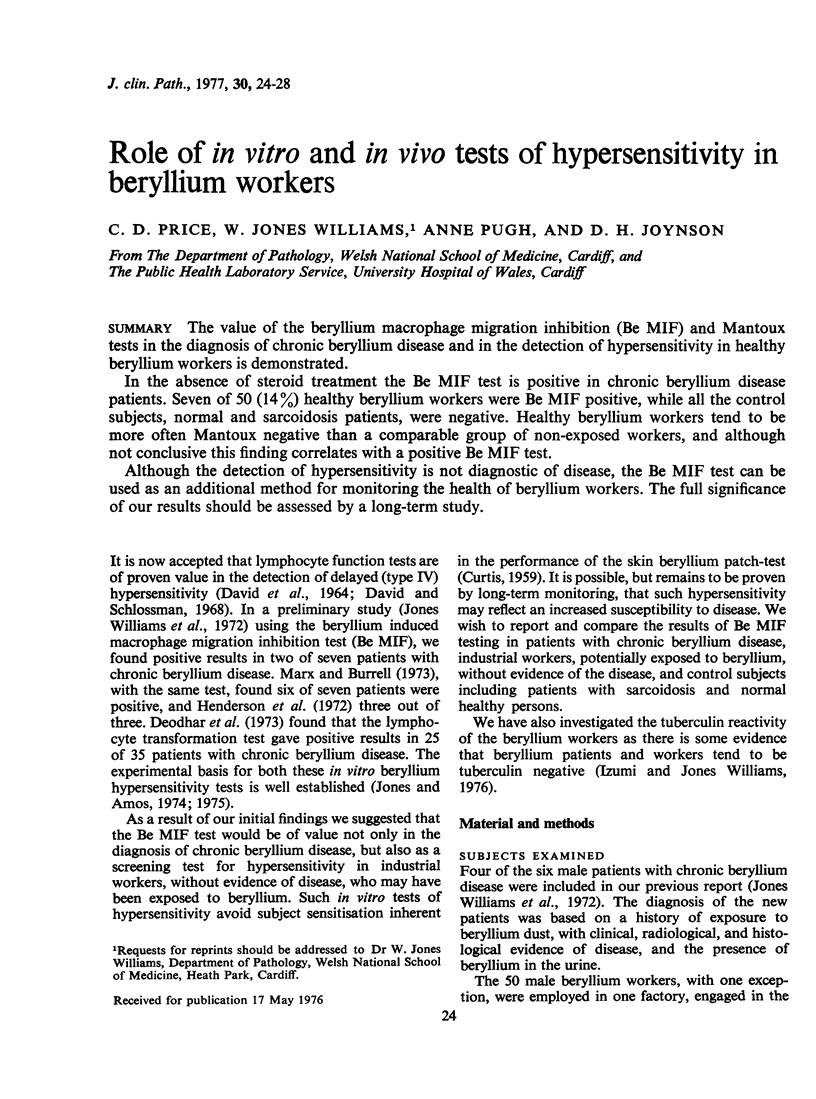
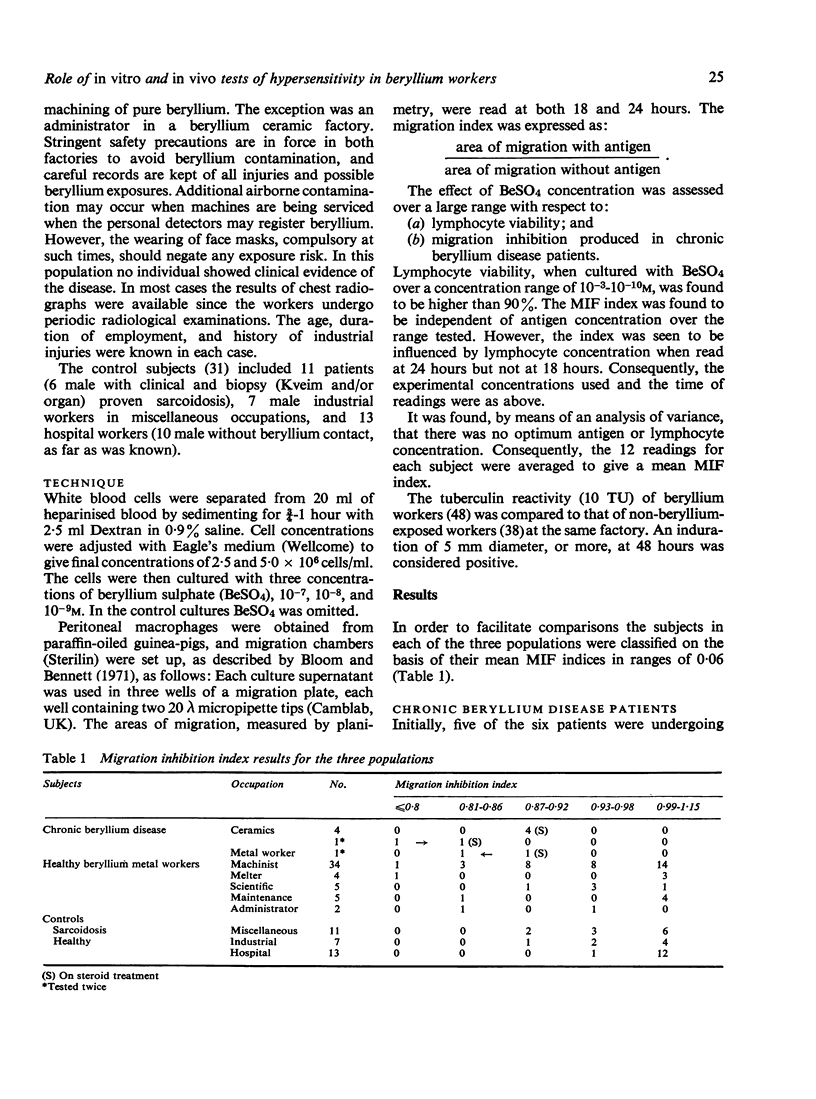
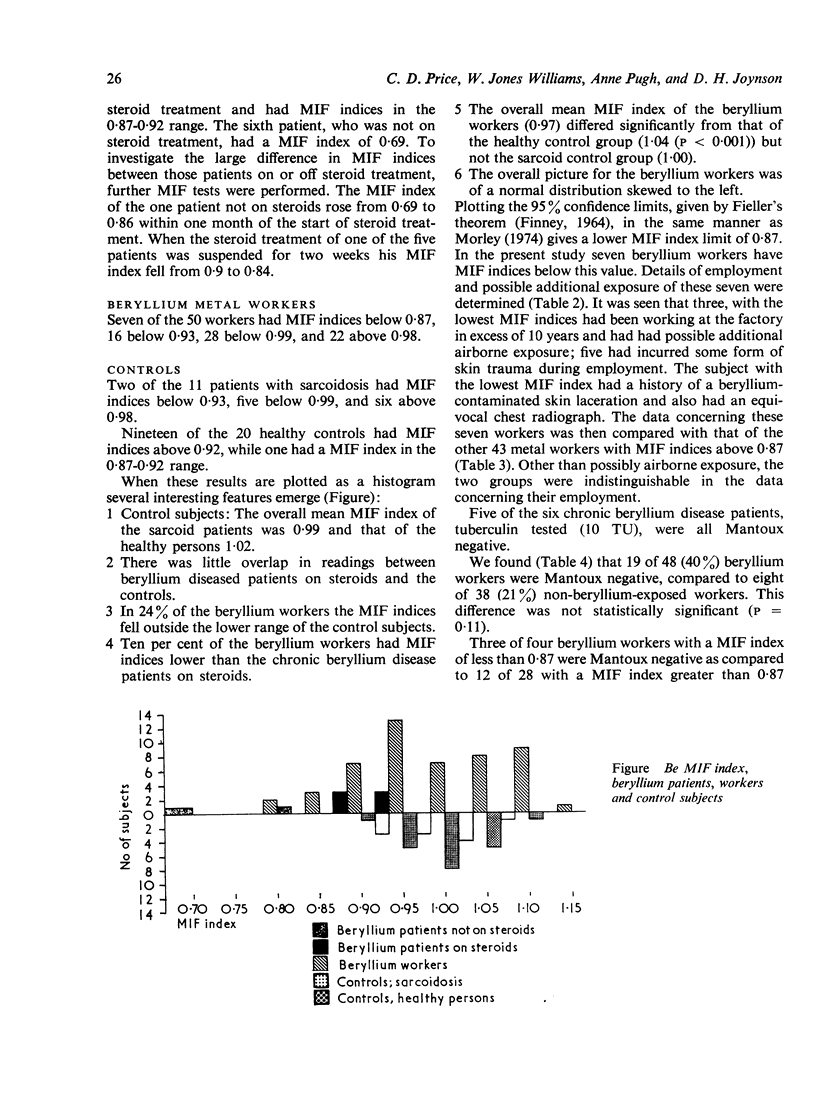
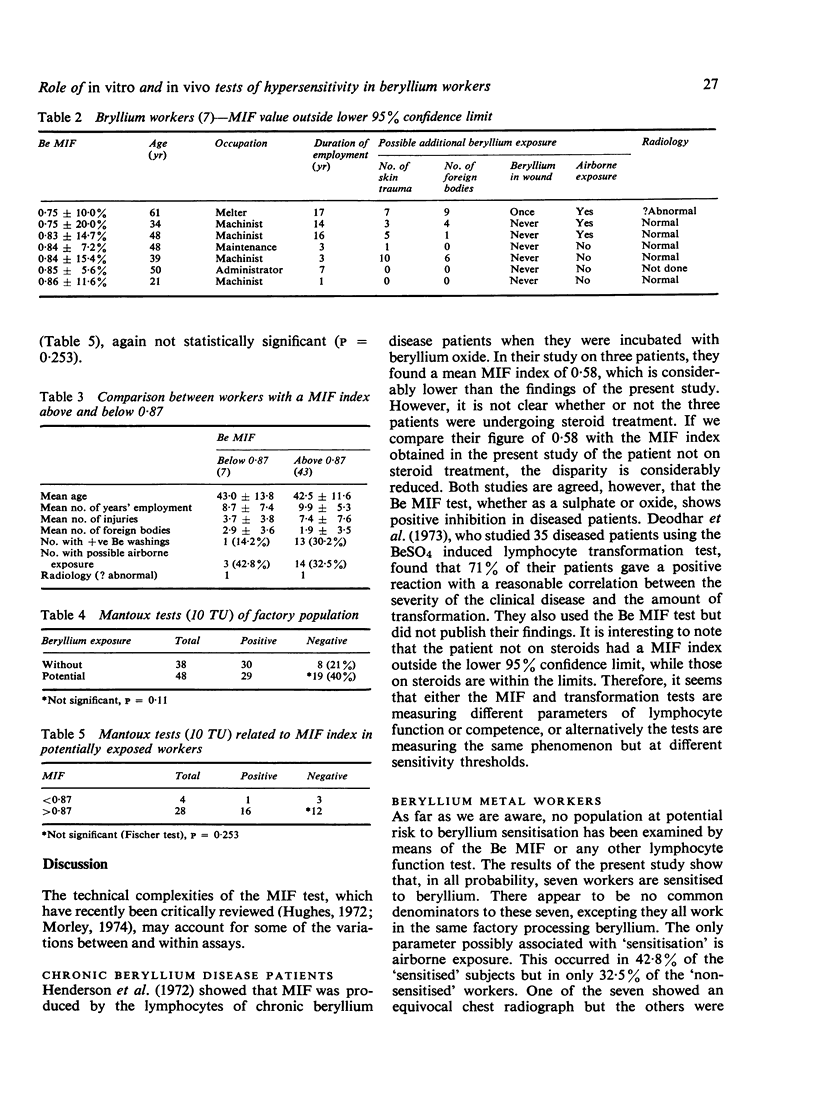
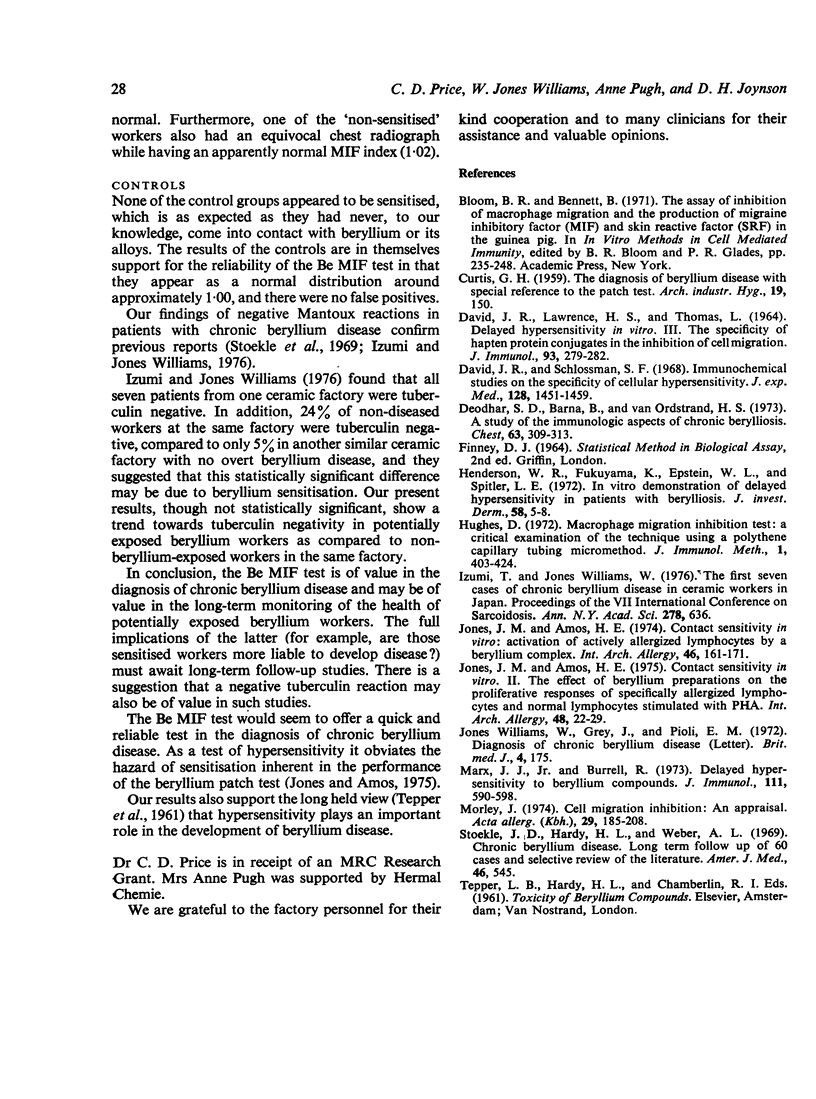
Selected References
These references are in PubMed. This may not be the complete list of references from this article.
- DAVID J. R., LAWRENCE H. S., THOMAS L. DELAYED HYPERSENSITIVITY IN VITRO. 3. THE SPECIFICITY OF HAPTEN-PROTEIN CONJUGATES IN THE INHIBITION OF CELL MIGRATION. J Immunol. 1964 Aug;93:279–282. [PubMed] [Google Scholar]
- David J. R., Schlossman S. F. Immunochemical studies on the specificity of cellular hypersensitivity. The in vitro inhibition of peritoneal exudate cell migration by cehmically defined antigens. J Exp Med. 1968 Dec 1;128(6):1451–1459. doi: 10.1084/jem.128.6.1451. [DOI] [PMC free article] [PubMed] [Google Scholar]
- Deodhar S. D., Barna B., Van Ordstrand H. S. A study of the immunologic aspects of chronic berylliosis. Chest. 1973 Mar;63(3):309–313. doi: 10.1378/chest.63.3.309. [DOI] [PubMed] [Google Scholar]
- Henderson W. R., Fukuyama K., Epstein W. L., Spitler L. E. In vitro demonstration of delayed hypersensitivity in patients with berylliosis. J Invest Dermatol. 1972 Jan;58(1):5–8. doi: 10.1111/1523-1747.ep13077177. [DOI] [PubMed] [Google Scholar]
- Hughes D. Macrophage migration inhibition test: a critical examination of the technique using a polythene capillary tubing micromethod. J Immunol Methods. 1972 Aug;1(4):403–424. doi: 10.1016/0022-1759(72)90034-8. [DOI] [PubMed] [Google Scholar]
- Izumi T., Kobara Y., Inui S., Tokunaga R., Orita Y., Kitano M., Williams W. J. The first seven cases of chronic beryllium disease in ceramic factory workers in Japan. Ann N Y Acad Sci. 1976;278:636–653. doi: 10.1111/j.1749-6632.1976.tb47078.x. [DOI] [PubMed] [Google Scholar]
- Jones J. M., Amos H. E. Contact sensitivity in vitro. II. The effect of beryllium preparations on the proliferative responses of specifically allergised lymphocytes and normal lymphocytes stimulated with PHA. Int Arch Allergy Appl Immunol. 1975;48(1):22–29. [PubMed] [Google Scholar]
- Jones J. M., Amos H. E. Contact sensitivity in vitro: activation of actively allergized lymphocytes by a beryllium complex. Int Arch Allergy Appl Immunol. 1974;46(2):161–171. doi: 10.1159/000231120. [DOI] [PubMed] [Google Scholar]
- Marx J. J., Jr, Burrell R. Delayed hypersensitivity to beryllium compounds. J Immunol. 1973 Aug;111(2):590–598. [PubMed] [Google Scholar]
- Morley J. Cell migration inhibition: an appraisal. Acta Allergol. 1974 Jun;29(3):185–208. doi: 10.1111/j.1398-9995.1974.tb01648.x. [DOI] [PubMed] [Google Scholar]
- Stoeckle J. D., Hardy H. L., Weber A. L. Chronic beryllium disease. Long-term follow-up of sixty cases and selective review of the literature. Am J Med. 1969 Apr;46(4):545–561. doi: 10.1016/0002-9343(69)90074-6. [DOI] [PubMed] [Google Scholar]
- Williams W. J., Grey J., Pioli E. Diagnosis of chronic beryllium disease. Br Med J. 1972 Oct 21;4(5833):175–175. doi: 10.1136/bmj.4.5833.175-b. [DOI] [PMC free article] [PubMed] [Google Scholar]


